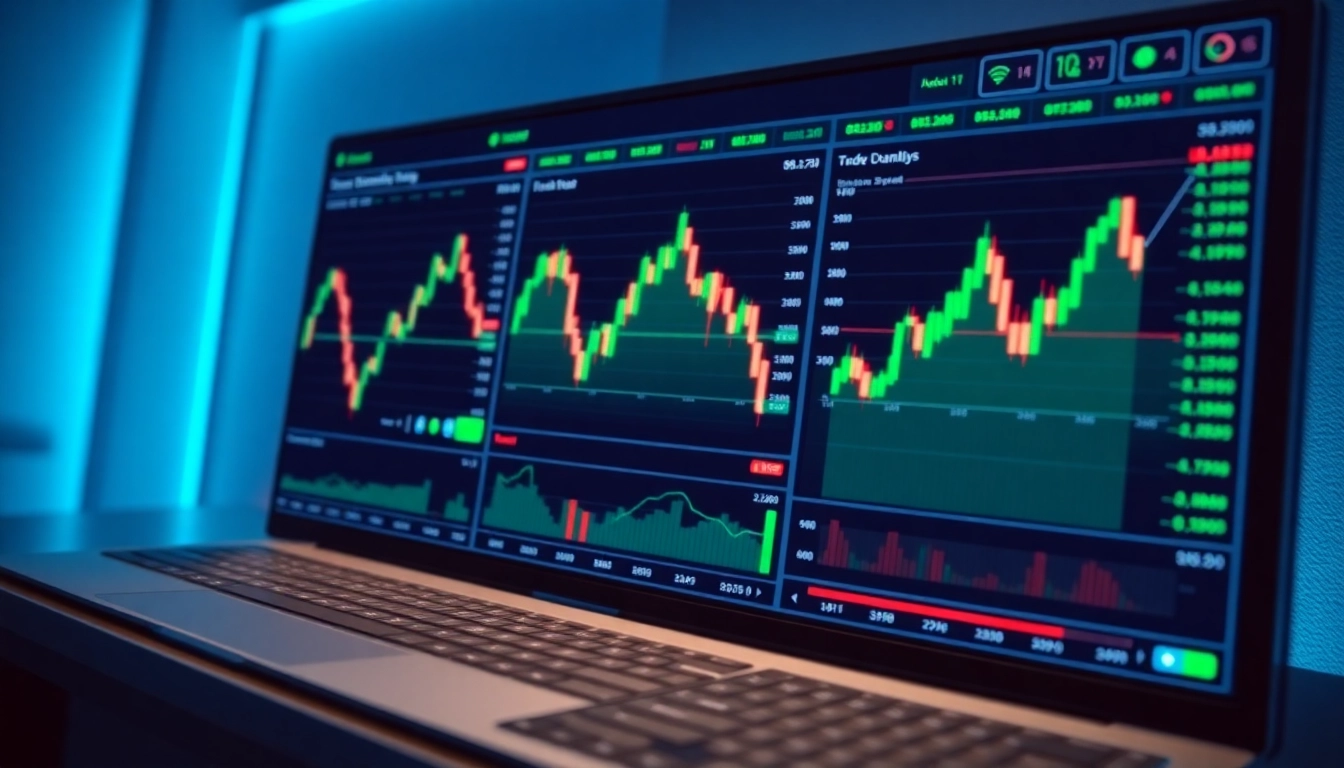Introduction to Trading View: Features and Benefits
In the rapidly evolving world of financial markets, traders and investors require sophisticated tools to stay ahead. trading view has emerged as a leading platform, combining advanced charting, social networking, and real-time data analysis all within a unified interface. Its versatility caters to both beginners and seasoned traders, offering a comprehensive suite of features that streamline market analysis, enhance trading strategies, and foster community-driven insights. This article explores the multifaceted functionalities of Trading View, why it remains a favorite among trading professionals, and how users can leverage its capabilities for persistent success.
Getting Started with Trading View for Beginners
Creating Your First Trading View Account
Getting started with Trading View is a straightforward process that allows new users to access a robust set of tools. To create an account, visit the official TradingView website and click on the “Sign Up” button. Users can register using email, Google, Facebook, or Apple accounts, ensuring flexibility and ease of access. Once registered, you can personalize your profile, set up your workspace, and explore the free version’s core features, which include basic charting, watchlists, and social interaction functionalities.
Understanding Basic Charting and Technical Analysis
Basic charting is the foundation of Trading View, enabling users to visualize price movements across different assets such as stocks, cryptocurrencies, forex pairs, and commodities. The platform offers various chart types—including line, bar, candlestick, and Heikin Ashi charts—to suit different analytical preferences. Technical analysis tools such as trend lines, support and resistance levels, and pattern recognition aid traders in identifying potential entry and exit points. Beginners should focus on mastering these fundamental aspects, which serve as the backbone for more advanced strategies.
Customizing Watchlists and Alerts for Better Insights
Custom watchlists allow traders to monitor specific assets efficiently. You can add symbols, set alerts on price levels, or technical criteria, and receive notifications in real-time. This functionality ensures traders never miss critical market movements and can act swiftly on emerging opportunities. To customize, simply click on the watchlist panel, add symbols, and configure alerts based on your preferred parameters, such as price crossing a threshold or indicator signals.
Advanced Trading View Techniques for Experienced Traders
Utilizing Scripts, Indicators, and Drawing Tools
Advanced traders often rely on Trading View’s extensive library of indicators, scripts, and drawing tools to refine their analysis. The platform supports custom scripts written in Pine Script, allowing users to develop tailored indicators or automate specific analyses. Popular built-in indicators include Moving Averages, RSI, MACD, Bollinger Bands, and Fibonacci retracements. Drawing tools like trendlines, channels, and Gann fans facilitate detailed technical analysis and pattern recognition. Mastering these tools enhances decision-making precision and can significantly improve trading outcomes.
Implementing Trading Strategies With Trading View’s Tools
Trading View offers features like paper trading, strategy backtesting, and overlaying multiple indicators to implement comprehensive trading strategies. For example, traders can create a Pine Script to generate buy/sell signals, test the strategy historically, and adjust parameters accordingly. Combining visual analysis with automated signals helps traders optimize timing, risk management, and position sizing. Starting with predefined strategies and incrementally customizing them based on personal trading style leads to more consistent results.
Integrating Trading View with Your Trading Platforms
Seamless integration with various brokerage accounts enables a streamlined trading experience. Many brokers support direct trading from Trading View, allowing users to execute orders without switching platforms. The integration typically involves linking your brokerage account via API or plugin support. This connectivity enhances efficiency, reduces latency, and ensures that technical signals translate directly into trades, thereby minimizing execution errors and optimizing performance.
Optimizing Market Research Using Trading View
Analyzing Market Trends with Real-Time Data
Trading View is renowned for its real-time data feeds across multiple markets, including equities, cryptocurrencies, forex, and commodities. By utilizing live charts and data streaming, traders can identify overall market trends, momentum shifts, and potential reversals. Technical indicators like moving averages and volume analysis help distinguish between bullish and bearish phases. Daily, weekly, or even intraday trend analysis provides a comprehensive view, supporting informed decision-making for both short-term and long-term trades.
Participating in Community Ideas and Sharing Analysis
One of Trading View’s distinctive features is its active community of traders and analysts. Users can publish market ideas, share charts, and comment on others’ analyses, creating a collaborative environment. Engaging with these community insights offers alternative perspectives, validation, and inspiration for trading strategies. Experienced traders often scrutinize community ideas to gauge market sentiment and evaluate collective wisdom, adding an additional layer of analysis to their decision process.
Evaluating Performance Metrics for Continuous Improvement
Trading View provides performance tracking tools that enable users to analyze their trades over time. Metrics such as win rate, profit/loss ratio, average return, and drawdown offer insights into the effectiveness of trading strategies. Regular review and adjustment based on these metrics foster continuous improvement. Advanced users can develop custom dashboards to monitor key performance indicators and set goals toward refining their trading approach.
Future Trends and Enhancements in Trading View
The Evolution of Trading Analytics and AI Integration
As technology advances, Trading View is likely to incorporate more artificial intelligence and machine learning features. AI-driven pattern recognition, predictive analytics, and sentiment analysis may become integral, providing traders with deeper insights and more accurate forecasts. Such innovations will assist traders in adapting swiftly to changing market dynamics and enhancing their strategic edge.
Emerging Features to Watch for in Trading View
Future updates might include more comprehensive mobile trading, enhanced automation capabilities, and broader integration with third-party tools. Augmented reality features or 3D visualization of market data could also emerge, offering new perspectives on complex datasets. Additionally, increased social trading functionalities may facilitate more collaborative learning and shared strategies within the community.
How Trading View Supports Long-Term Trading Success
Trading View’s adaptability, combined with its community support and continuous innovation, makes it a valuable long-term partner for traders. By fostering disciplined analysis, strategy development, and ongoing skill enhancement, Trading View helps traders build sustainable practices. Its flexibility ensures users can evolve alongside the markets, adopting new techniques and technologies as they emerge.

